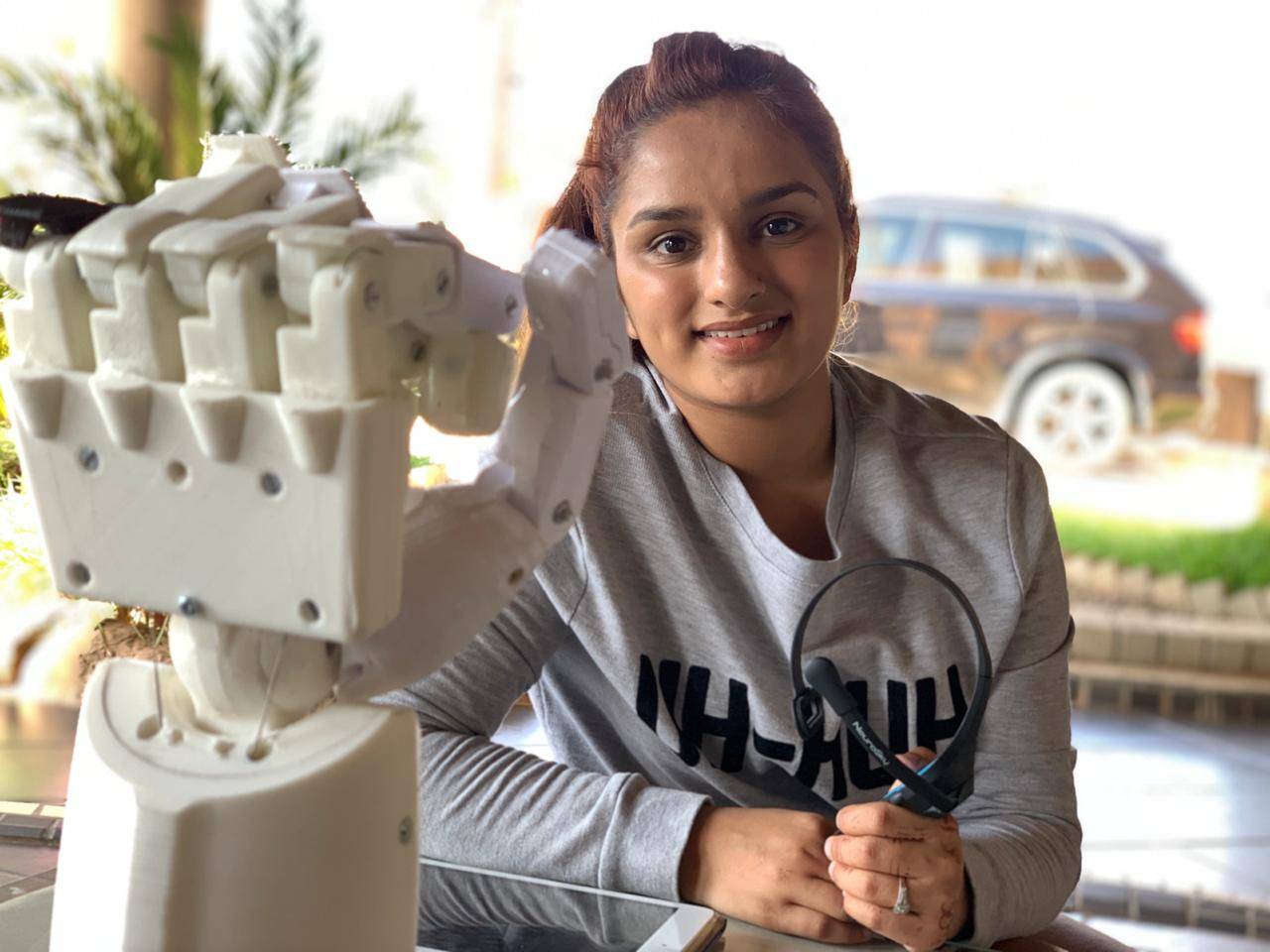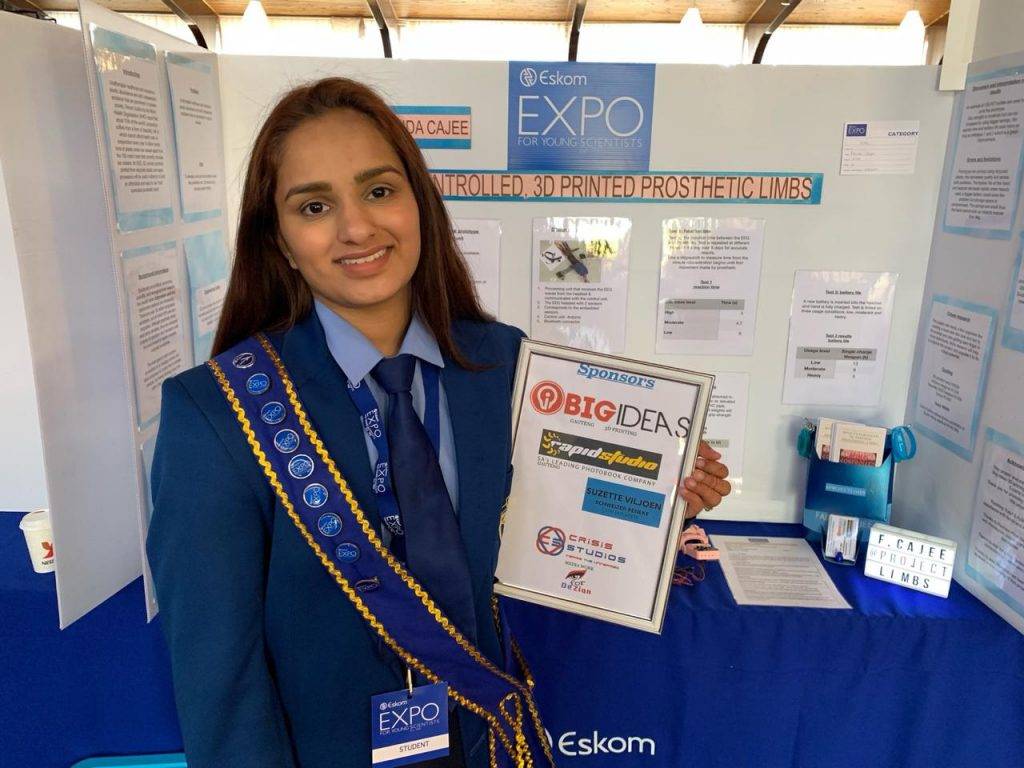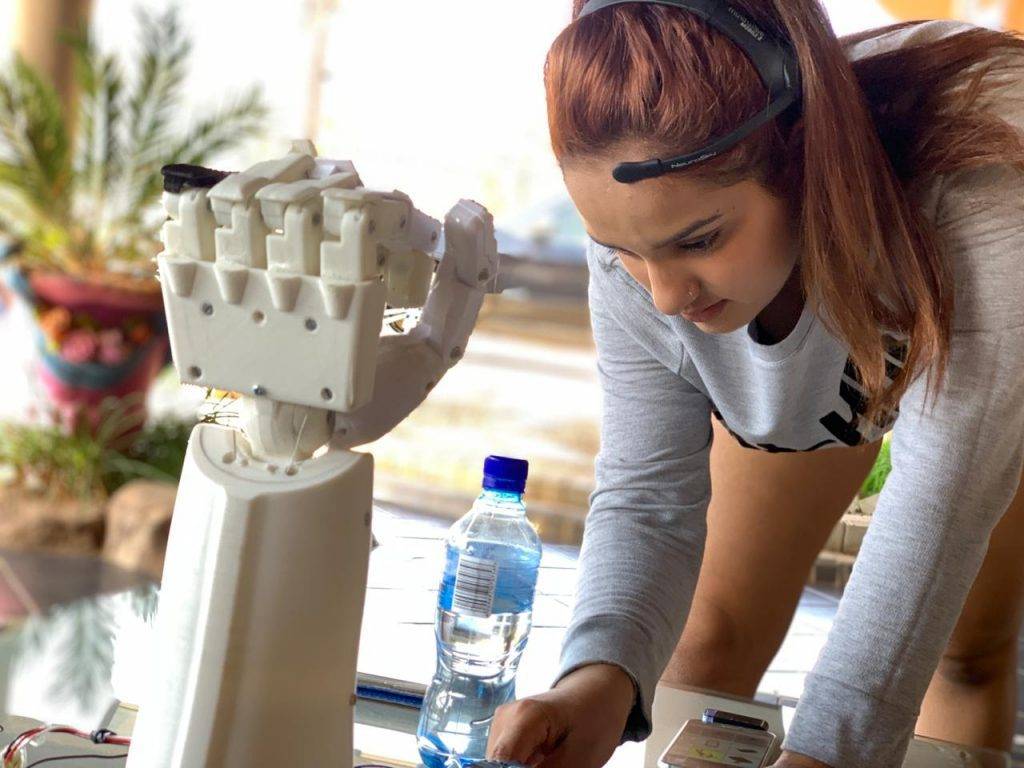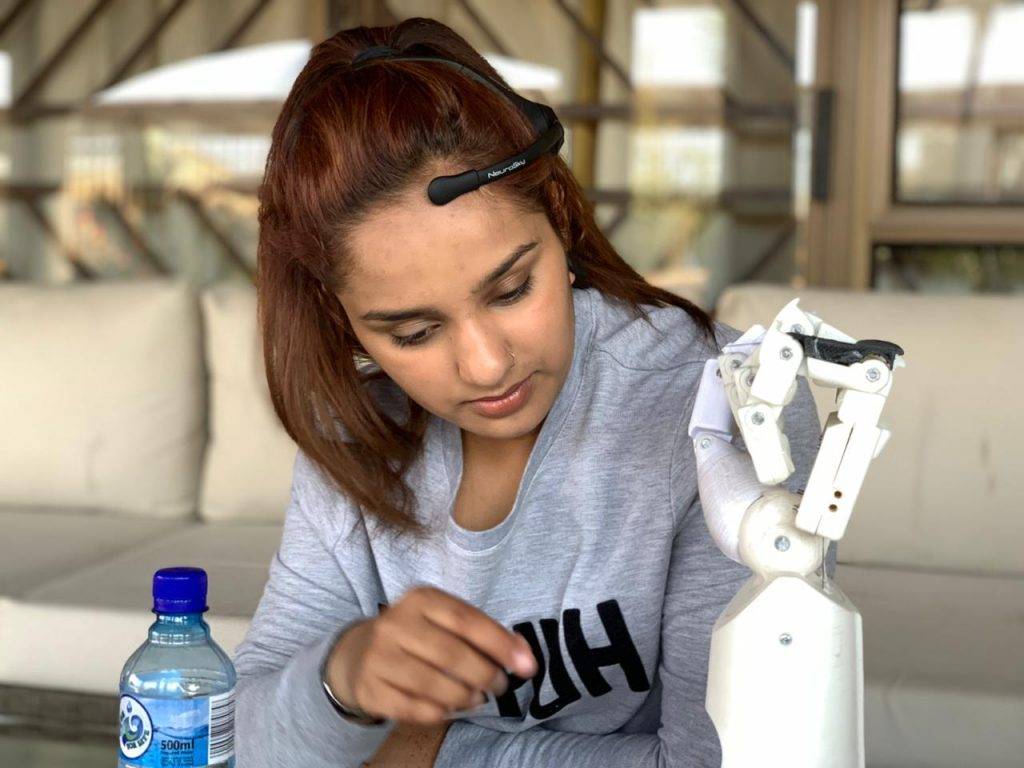All About The Self-Taught Teen Who Won Prize For Building Mind-Controlled 3D-Printed Prosthetic Arm

A Star Is Born
What’s better than a brain-controlled robotic prosthetic arm that gives an amputee the sense of touch? Simple. A mind-controlled 3D-printed prosthetic arm made out of recycled plastic by a self-taught schoolgirl from South Africa.
Farida Cajee, 18, a Grade 11 pupil from Schweizer-Reneke, has won the 2019 Eskom Expo for Young Scientists for coming up with an ingenious way to make prosthetics a lot more affordable and much easier to use. And she’s being praised by all and sundry.

Cajee won gold at the regional level of the Science Expo, bagging a couple of awards including Best Female Project and Best Engineering Project. She has, thus, qualified for the big one — the Eskom International Science Fair scheduled for September 24-27, in Boksburg.
Cajee had actually been trying to win the Eskom competition for quite some time, and for her, the seventh time’s the charm.
After trying and failing to get the gold for the last seven years, her resilience has finally paid off. And what a way to finally announce herself.
She has built a robotic prosthetic arm that responds to brain waves — clutching and letting go of stuff at the will of the wearer. And her creation is a lot cheaper being that her 3D-printed arm costs just ZAR 9 K when the traditional prosthetics go for up to ZAR 140 K or more in South Africa.
What Inspired Cajee’s Creation?
Quite simply, she was inspired by the need to make medical services more affordable to people having experienced first-hand how steep the costs can be.
Around when she was, yet again, considering entering into the Eskom competition, her mother fell gravely ill. And the huge medical bills really affected her family’s finances.
This led to discussions with her mom, after which both of them decided it would be great to work on something that would be of great help to people who need medical assistance but can’t afford it. Something in the biomedical category beckoned and the brilliant pupil went to work.
How She Pulled It Off
Once Cajee decided on a prosthetic alternative that would be a gamechanger, she set about it determined to make it work.
But it was no easy feat. first, she had to figure out the parts, and then the control unit, and then the brain waves thingy — it was was quite a lot. And then, she also had to make sure the whole thing was considerably cheap.
What followed was three months of relentless work and intensive research, but she was able to figure it out in the end. With the help of sponsors, she was able to get her hands on some of the parts from various countries including the UK and US, including an electroencephalograph (EEG) headset that measures brainwaves. And from that moment, the whole thing came together.

Cajee used the headset and brainwaves to concentrate and get some movement, but that wasn’t all. She went further by collecting PET bottles that were lying around and recycled them to make a prosthetic hand.
Then, her sponsors helped her acquire an Arduino which she connected to the hand. After writing a lot of code and doing some programming on the setup, she connected it to the headset. And voila! — it worked!
As seen in this video, the headset reads brainwaves, such that when one concentrates hard enough, the prosthetic hand opens, and upon relaxing, it closes. That way, an amputee is able to grab and hold on to just about anything and let go when they want to. About ZAR 9 K went into the prototype.
Cajee’s creation scores big points for design and functionality. And, in truth, she has exceeded expectations by getting it to work. (See another video.)
What She Hopes To Achieve Going Forward
WeeTracker initiated contact with Cajee and while she appears to be uncertain about where to go from here, she certainly has her eyes on the medical field. It is also understood that the young pupil is driven by the desire to lower medical costs as much as possible.

At the moment, she’s getting all the accolades she deserves for putting it all together on her own.
“This was done by me alone, she told WeeTracker. “My father Yusuf and brother-in-law, Rayhaan, helped eliminate limitations — but it was 95 percent me.”
Later this month, Cajee will be competing in the Eskom International Science Fair in which bursaries and cash prizes will be won. Over 500 projects from around the world are expected to feature at this year’s competition.